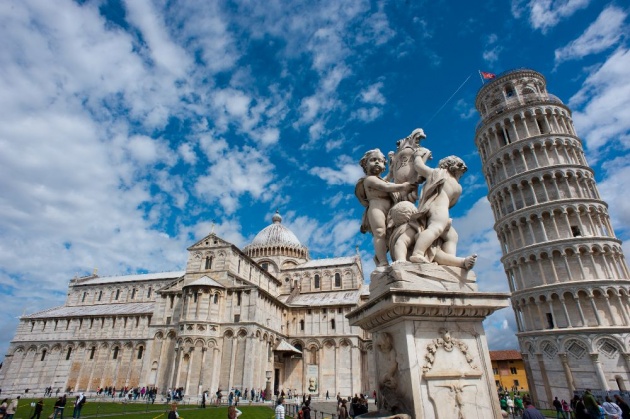 image source: www.google.com
image source: www.google.com
Hello, guys!
In this blog, I want to discuss one of the famous wonders of Italy, and that is the Leaning Tower of Pisa. I find it really appealing and full of mystery, as many of the facts about the building of the tower and the entire complex are still controversial. But, I want to share about it because there is a good reason the tower to become one of the top tourist attractions in Europe, and particularly, in Italy.
Where is it?
Pisa is a city, located in Central Italy, in the area Tuscany. The distance from the capital of Italy, Rome to Pisa and its Leaning Tower, is around 350 km. Even though I consider Rome for a better tourist site, due to its many sightseeing opportunities, the tower is not something one should miss when visiting the country. The city of Pisa also offers interesting sites and architecture to everyone who would like to take a tour around the location.
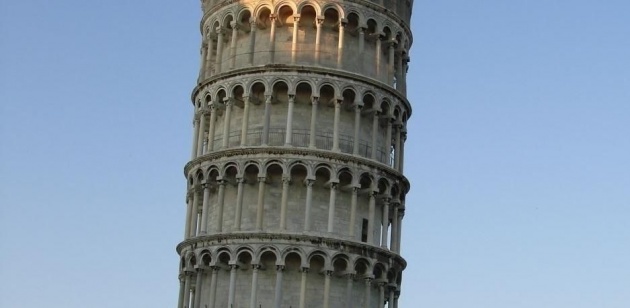 The Leaning Tower of Pisa
The Leaning Tower of Pisa
Facts about the Tower
The Leaning Tower of Pisa (Italian: Torre pendente di Pisa) or simply the Tower of Pisa (Torre di Pisa [ˈtorre di ˈpiːza]) is the campanile, or freestanding bell tower, of the cathedral of the Italian city of Pisa, known worldwide for its unintended tilt.
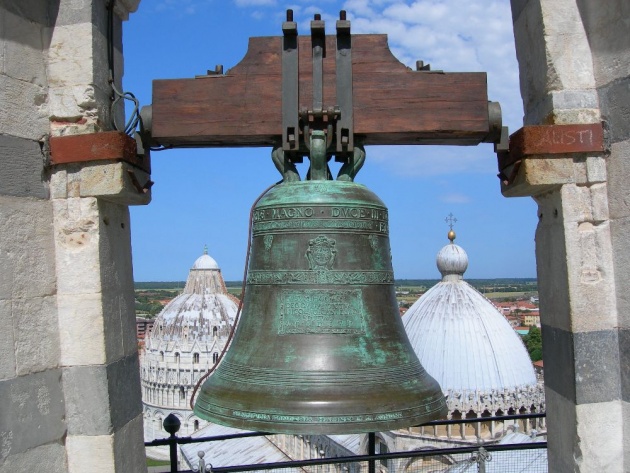 image source: www.google.com
image source: www.google.com
The shape of the tower is cylindrical, but due to the fact, that it was being built over a long period of time and by different methods, it has a slight curve, made to prevent the tower from falling. The height of the Leaning Tower of Pisa is around 56 m, but its most attractive feature is the angle that it forms with the ground. The deviation is nearly 7% to the south. It is still argued about the fact whether it was intentionally built leaning, or it was a human mistake while making the initial project of the building. Most researchers believe the tilt was not intended by design, but rather it happened later in time. The architect of the tower is unknown, although there are many speculations about who this person was.
video source: www.youtube.com
The tower is constructed of white marble and limestone, shining in the sunlight with its multiple columns and arches. Its total weight is estimated to be 14 500 MT, and that's one of the reasons it was so difficult to stabilize the tower after it started tilting more in the recent years. The total number of floors is eight, and it has seven bells, representing the main seven musical notes. Inside the building, there is a winding staircase with 296 steps leading to the top, whereas the inside of the cylindrical tower is empty. Millions of tourists visit the tower each year to feel this unique place and make one of those so popular funny photos, where they pretend to prevent the tower from falling.
video source: www.youtube.com
History of the Tower
The building of the tower started in 1173, and in the very beginning of the construction, it became clear that the tower is not stable and leans to the north. The exact reason is considered to be the ground underneath the base, most probably the consistency of the soil, which made the tower sink deeper to one of its sides. The construction was finished around 200 years after it was started, due to many reasons. The main ones were the wars which happened during this period, the difficulties in the building process due to the initial movement of the tower, etc. During the different stages of the building, many architects worked on it, trying to make it as stable as possible so that it doesn't fall on its side. Some of them were better than the others, but it seems like a miracle that since the initial tilt in the XII century until now, the tower still stands without collapsing.
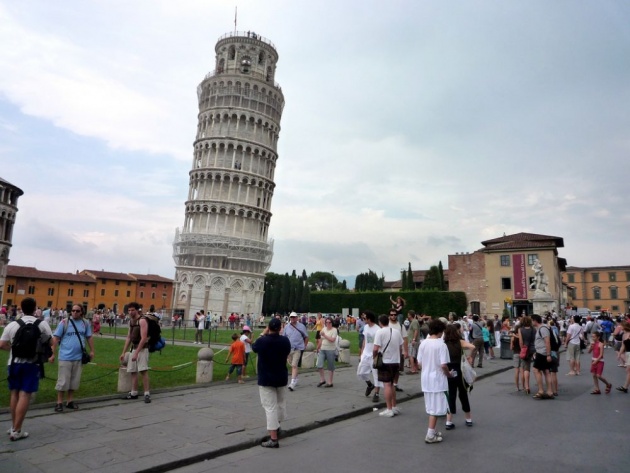 image source: www.google.com
image source: www.google.com
One curiosity about the Tower of Pisa is that it was used by the Italian scientist Galileo Galilei for proving one of his theories. It is claimed, that in 1589 he dropped two objects with different masses from the top of the tower, to test his assumptions that they will fall with the same speed. Before his experiment, it was believed that the mass directly affects the speed of falling, due to the gravity.
 image source: www.google.com
image source: www.google.com
In the beginning of this century, the tower was stabilized for the last time, and since then it is open for visitors, who can enjoy a view of the complex and the city from the top floor. It can't be confirmed that in the future, it will not be needed to stabilize it again, but for now, this world treasure is preserved.
The Complex
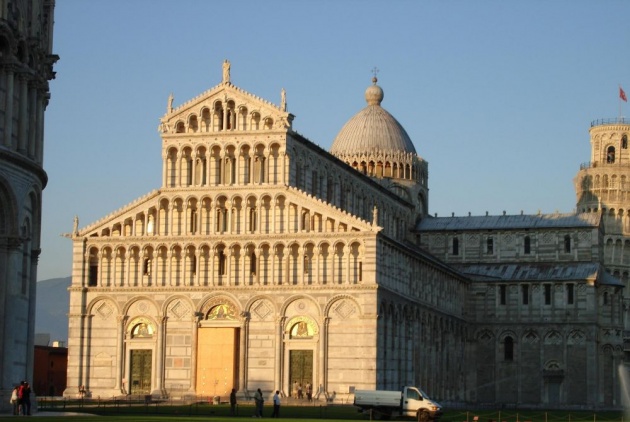 The Pisa Cathedral
The Pisa Cathedral
The Leaning Tower is standing on the Square of Miracles in Pisa. The tower is actually the campanile of the cathedral right next to it, but it managed to become more popular than the cathedral itself. This is owed entirely to its look. Indeed, once on the Square of Miracles, one can see all of the buildings, the magnificent architecture, their white color, but the tower is the first thing that catches the eye. Besides the cathedral, other sites in the complex are the Pisa Monumental Cemetery and Baptistery. All buildings located in the Square of Miracles are surrounded by well-maintained greenery. Most tourists visit this place only because of the tower, which managed to make the nearby city of Pisa popular for that reason. If this unique building didn't exist, the city would be no different than any other populated area of the same size.
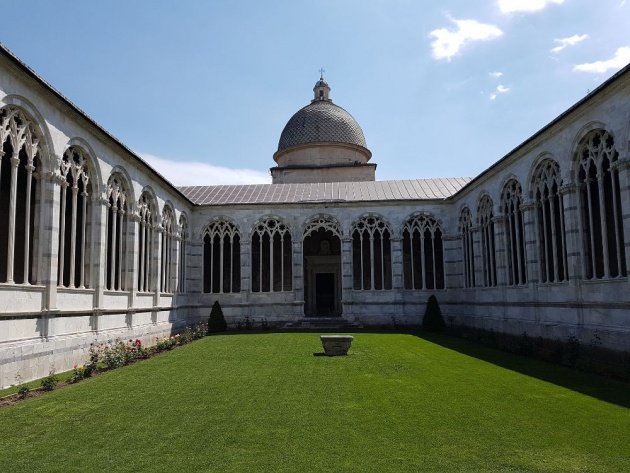 image source: www.pixabay.com
image source: www.pixabay.com
The Pisa Cathedral is the biggest building on the square and is covered with marble, as well. Its construction started before the Tower of Pisa, in 1063. Both the cathedral and the tower share the same style - Romanesque architecture, with very particular columns, arches, and ornaments. I'm not going to describe any further about it, as I'm far from being too knowledgeable in construction and architecture of a cathedral. My main intention is to focus on these buildings mostly from a tourist point of view.
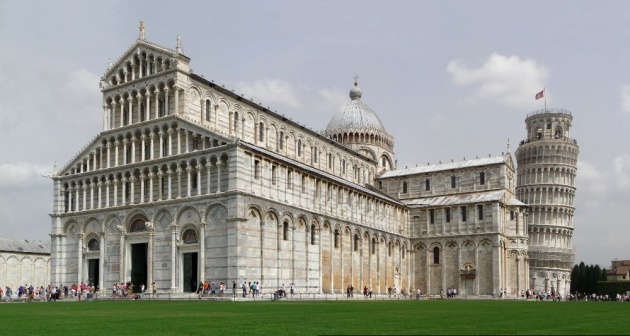 image source: www.google.com
image source: www.google.com
The Pisa Baptistery is the biggest one in Italy, with a height similar to the Leaning Tower. What's interesting about it is that it is also leaning to one of its sides, but as its base is larger than the one of the tower, and the tilt is insignificant, this building is more stable. One of the most impressive parts of the Baptistery is its roof, which was built in several stages, and contrasts with the white of the rest of the construction and the other monuments on the square, with its reddish color and unique shape.
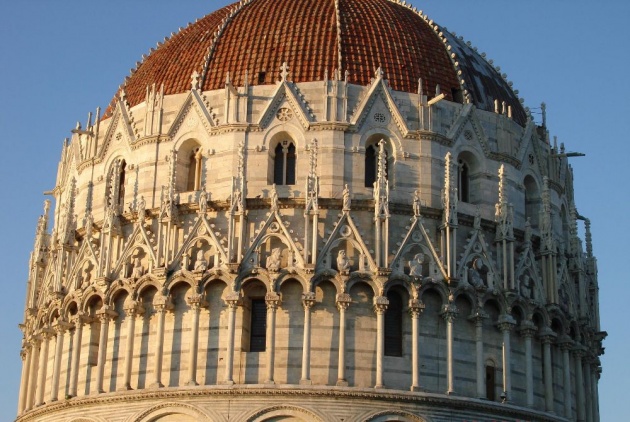 The Pisa Baptistery
The Pisa Baptistery
As I mentioned, all sites are located on the Square of Miracles, which spreads on an area of around 8 - 9 ha. Since in the past years, this place is mostly visited by tourists, rather than people interested in history or architecture, part of the square is used as a small market to sell various souvenirs - from clothes and T-shirts to coffee mugs and keychains. It's a great place to spend an afternoon or even a day; there are enough things to do and to see. It is also a highly recommended location by many tourist guides.
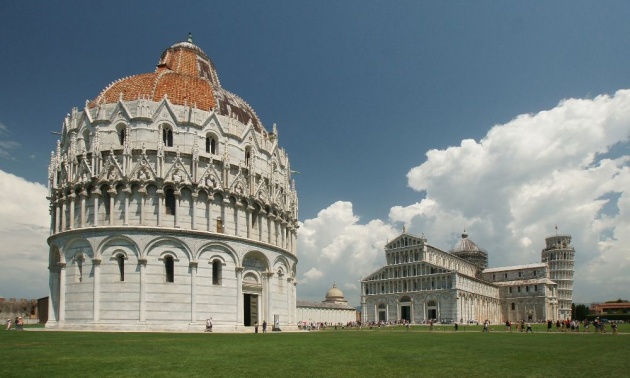 image source: www.pixabay.com
image source: www.pixabay.com
The Leaning Tower of Pisa is a real example of how a unique and strange look or a feature, can make a site so interesting that now, it's the most popular attraction in the area and one of the world-famous landmarks of Italy. And if we add the mystery around the early stages of the construction, it becomes even more attractive.
Thanks for reading!
- NinaB



